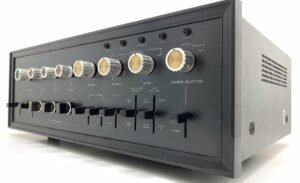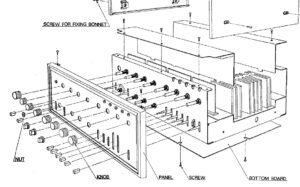Servicing Old Classic Audio Amplifiers
Old classic audio amplifiers hold a special place in the hearts of audiophiles. These vintage machines, often built with meticulous craftsmanship, can deliver rich, warm sounds that modern amplifiers sometimes fail to replicate. However, to maintain their performance, regular servicing is essential. Here’s a detailed look into what servicing these classic amplifiers entails and why it’s crucial.
| Understanding the Importance of Servicing
Preservation of Sound Quality
Over time, components in classic amplifiers degrade, leading to a loss in sound quality. Regular servicing helps maintain the original audio fidelity, ensuring that the amplifier continues to produce the rich, full-bodied sound that it’s known for.
Longevity
Servicing helps extend the life of the amplifier. By addressing wear and tear early, you can prevent more serious damage that could render the amplifier unusable.
Safety
Older amplifiers may have outdated or worn-out electrical components that could pose a safety hazard. Servicing ensures that the amplifier operates safely. |
| Key Components to Check During Servicing
Capacitors
One of the most critical components in any amplifier. Over time, capacitors can dry out or leak, leading to reduced performance or even failure. Replacing old capacitors is often necessary to restore the amplifier to its original performance levels.
Transistors
For solid-state amplifiers, transistors are crucial. Testing and replacing any faulty transistors can prevent further damage to the circuit.
Resistors and Potentiometers
These can drift in value over time, affecting the amplifier’s tone and volume controls. Ensuring they are within the correct specifications is vital for maintaining sound quality.
Connections and Wiring
Inspecting and cleaning connections, solder joints, and wiring is important to prevent signal loss or interference. |
| Servicing Process
Initial Inspection
A thorough visual inspection is the first step, checking for obvious signs of wear, damage, or corrosion.
Testing
Using electronic testing equipment (like multimeters, oscillocopes and audio analysers) to check the performance of the amplifier’s components. This includes checking the power supply, output stages and signal path.
Component Replacement
Any faulty or worn-out components are replaced with new ones, ideally matching the original specifications as closely as possible to maintain the amplifier’s authentic sound.
Cleaning
Dust and grime can accumulate inside the amplifier over the years. Cleaning the interior components and the exterior controls is crucial for both aesthetics and performance.
Final Testing and Calibration
After servicing, the amplifier is tested again to ensure all components are functioning correctly. Calibration may also be necessary to fine-tune the amplifier’s performance. |
| Challenges in Servicing Classic Amplifiers
Parts Availability
Finding original or compatible replacement parts for vintage amplifiers can be challenging. In some cases, custom fabrication or sourcing from specialized suppliers may be necessary.
Expertise Required
Servicing vintage amplifiers requires specialized knowledge. Not all modern technicians are familiar with the older technologies, so finding a skilled technician is important.
Balancing Modern and Vintage
Some audiophiles prefer to keep their amplifiers as original as possible, while others are open to modern upgrades. This balance can affect the servicing approach. |
Conclusion
Servicing old classic audio amplifiers is both an art and a science. It requires a deep understanding of vintage electronics and a passion for preserving audio history. Regular maintenance not only keeps these amplifiers in top condition but also ensures that they continue to deliver the exceptional sound that they are cherished for. Whether you’re a seasoned audiophile or a newcomer to the world of vintage audio, proper servicing is the key to enjoying these timeless pieces for years to come.
Maintaining your classic amplifier is more than just a technical task – it’s a way to honor the legacy of audio engineering and continue the tradition of enjoying music the way it was meant to be heard.


